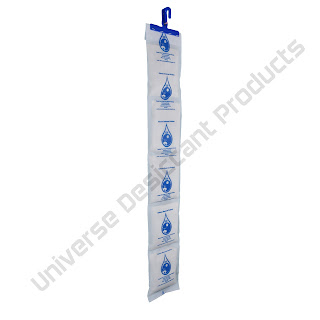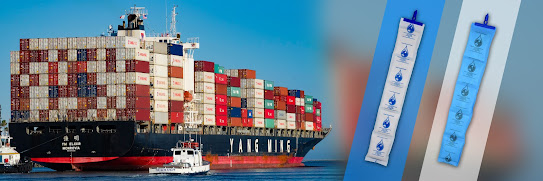Using Dessicants To Protect Fine Collectables
The first step in protecting valuable collectibles is to keep them dry. Water is essential for pests and other dangerous living things. Some chemical reactions that cause damage are at least partially aided by moisture. This subject is complex and involves too much chemistry. The easiest and simplest advice I could find was to roast a pound of rice in an oven at 300°F for about half an hour. Put the rice in an oven-safe container so that it doesn't absorb any moisture. If you have read my article concerning bio-hazards and silver-fish, then you will know that this is not a good idea Desiccant Dryer Suppliers.
Calcium chloride can also be a bad idea. This is the stuff that causes ice-roads in certain areas of the world. It takes up water very well, but it eventually turns to liquid. Joan Hammond- the company chemist of Drierite Company- said, "This is trading one problem against another. It's that stuff that wrecks cars.
The smart way is to do this. You use a real desiccant, gypsum. This is the same stuff they use for sheet-rock. This is specially prepared and gypsum. They use a chemical to change the color of the gypsum when it gets too full of water. You have two options if it is full of water. You can either throw it away or cook it in the oven until dry. The water absorption capacity doesn't diminish but the indicating substance wears. It doesn’t actually lose its effectiveness. It simply migrates to the granules in gypsum until it reaches a thin enough layer that the color changes don’t show. Gypsum is completely safe. Enjoy a bowl for breakfast. However, the chemical used to indicate moisture is poisonous.
So, how can I buy and use this stuff? The Drierite Company will happily sell you the small amount that hobbyists and collectors might use. They'll also give you an aluminum container to store it. When the need arises, you can throw the aluminum and any desiccant into the oven. Or bake a batch of 'taters. However, the desiccant should be cooked separately from the taters. It all depends on your particular needs and how much you're willing to spend. The stuff is relatively innocuous enough that you could just scatter it around in your case or in the back of a drawer. After it finishes its job, you'll have to sweep it out. You can also put it into a little saucer or make an aluminum foil vessel. Or, you could even make a tiny bag from porous cloth. Dreirite makes tiny bags with your stuff already inside. This is their take on the topic of how big bags can fit in what space.
SUGGESTED Usage OF DRIERITE-DESICCANT BAGSVolume of moisture tight container
Volume Example (appx. )Bag Size Cu. Cu. in. Exemple
3 grams 0.13 228 half-gallon milk carton
6 grams 0.25 456 gallon jug
1 ounce 1.25 200 case of wine
2 ounces 2.54320 suitcase
4 oz 5 8640 small filing cabinet
8 ounces 10 17280 refrigerator
When describing the volume, they use the word "tight". This table is intended for cameras, which are enclosed in a bag that can be shipped off to customers. The desiccant bag draws moisture out of the air inside the bag so that the camera does not rust or corrode. It is not expected that it will absorb all the moisture from the high seas air. This means you must make sure that your collectible is kept dry and in a sealed container.
Most likely, the desiccant will need to be replaced. If you have a way to contain the stuff that allows you to view it and you have the indicating Granules you can tell when you should put it in the oven. If it is not in its own bag, such as the ones Dreirite sells to you, then you can use non-indicating desiccant. However you will need a means of determining when it has absorbed the maximum amount of water. ......
Humidity Indicators
Get some indicator card while shopping at Drierite Company. These are little pieces made of cardboard with the indicator chemicals painted on the surfaces. They are available in two versions. They change from blue-purple to purple when there is at least 30% relative humidity. These devices cost around 15C/. The other cost about 50C/. It can display a variety of colors that indicate the humidity, ranging from 10% up to 60%. A color scale is used to interpret the hue and it can indicate changes in humidity over a period of time. Both can be reused after they dry.
You must be very careful about opening your first card.
There are several tricky issues to consider when it comes to desiccants. First, some items, like fabric might not want to be dry to the point where they become fragile and fall apart. The second is that you may be able to keep your collectibles in an airtight container. It depends on what your collection is, what container it is in, where it is located, and the time of year. To be fair to my clients, I must also admit that I make beautiful things from wooden items. Unfortunately, wood can have its own issues with moisture and the environmental conditions. I can't guarantee the sealing ability of anything that comes out my shop.




Comments
Post a Comment